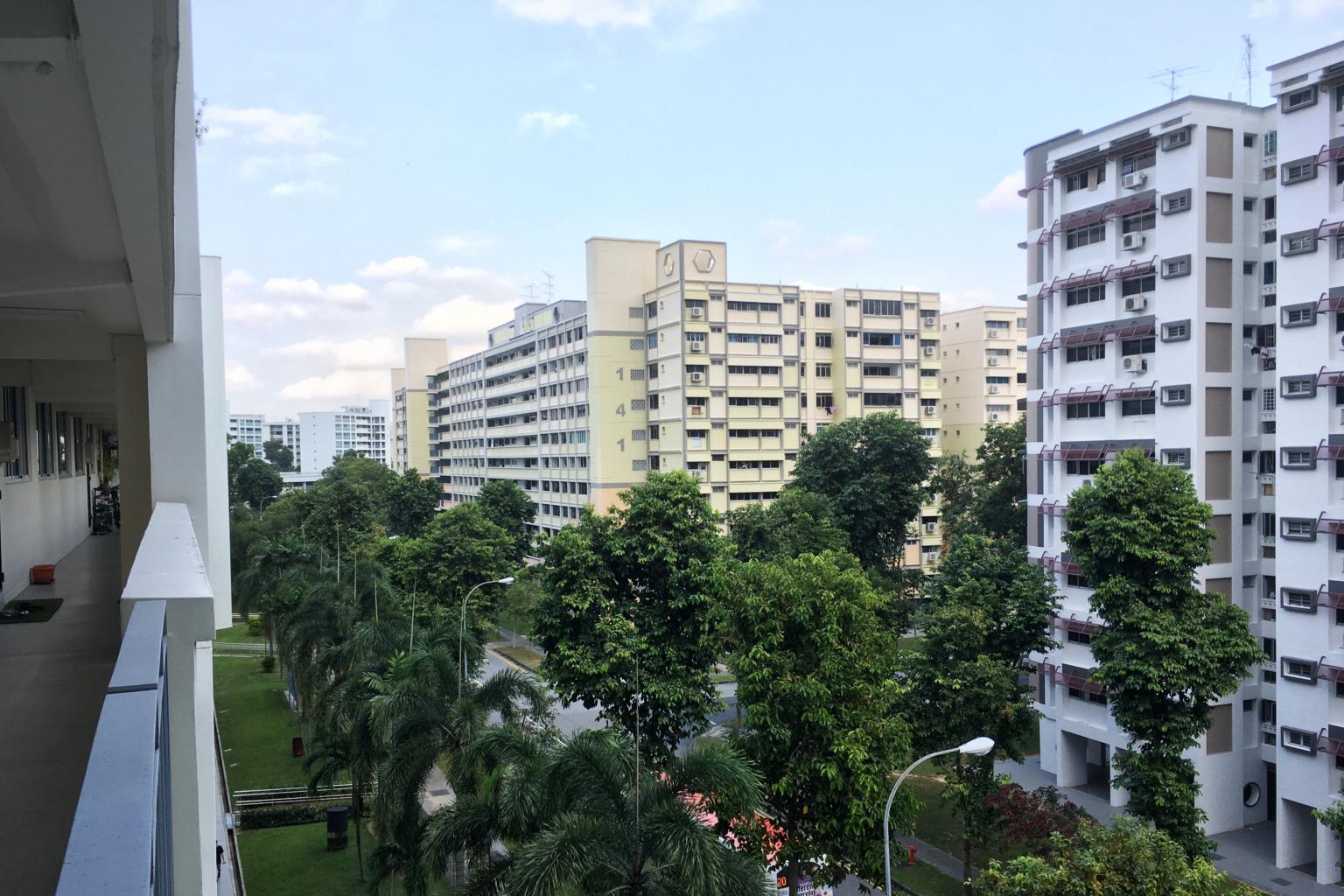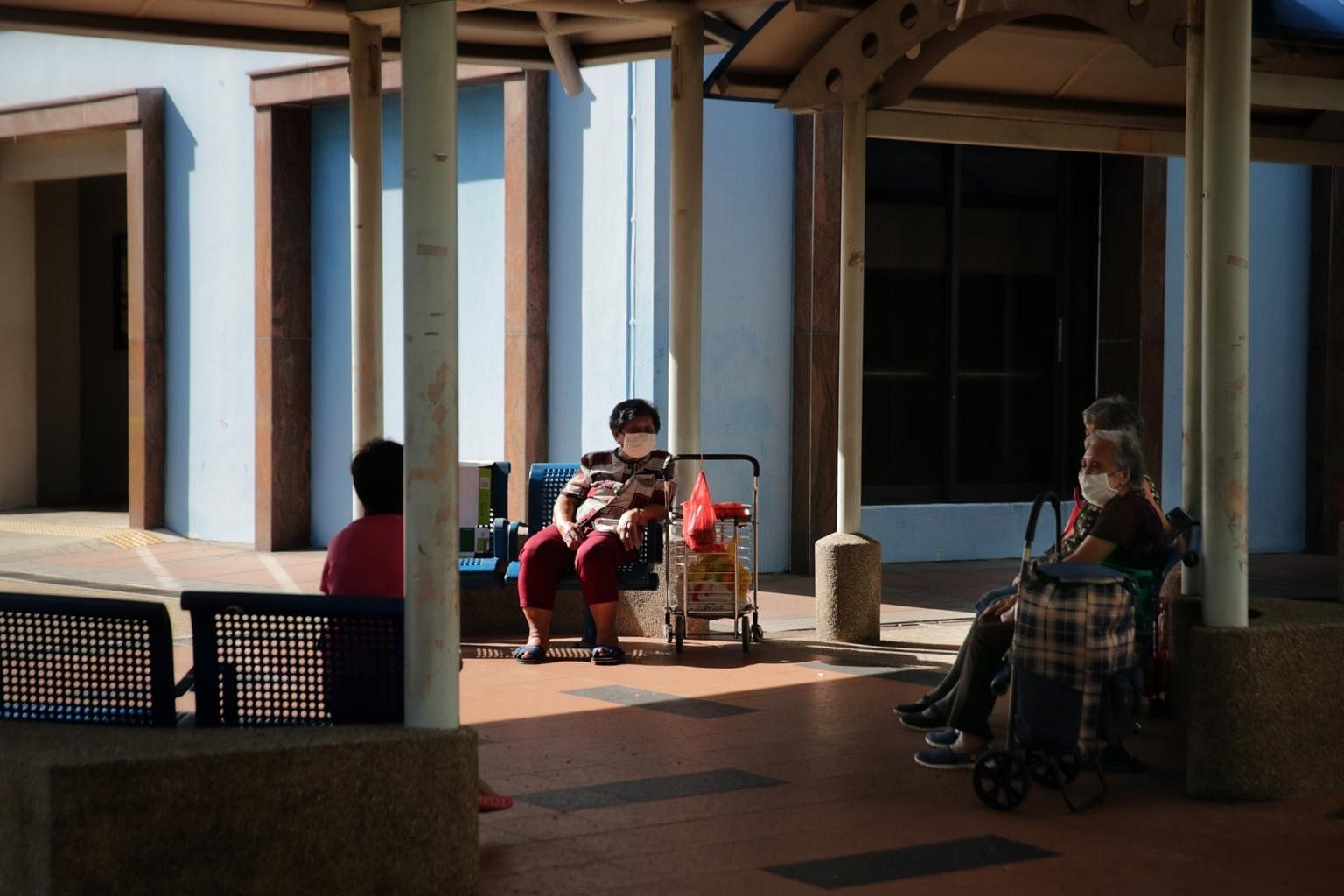Singapore resident population in HDB flats falls to 3.04m, with smaller households spread over more flats
Sign up now: Get ST's newsletters delivered to your inbox

The HDB report surveyed about 7,800 HDB households in 2018.
ST PHOTO: ALPHONSUS CHERN
Yuen Sin
Follow topic:
SINGAPORE - The number of Singapore residents living in Housing Board flats has dipped for the first time since 2003, with household sizes shrinking even as the number of HDB households continued to climb.
A total of 3.04 million Singapore residents - or close to eight in 10 Singapore residents - lived in HDB flats in 2018, as compared to 3.06 million in 2013.
They made up 1.01 million households, up from 0.91 million five years ago, according to the latest HDB Sample Household Survey, which is conducted once every five years.
One reason for this trend is that the size of household units living in HDB flats is shrinking, with an average of 3.1 people per household in 2018, down from 3.4 in 2013 and 2008.
This could also be due to more residents upgrading to private property, said Ms Christine Sun, OrangeTee & Tie's senior vice-president of research and analytics. She noted that there had been a substantial number of mass market private home and executive condominium launches between 2013 and 2018.
The HDB report, which surveyed about 7,800 HDB households in 2018, tackled issues related to public housing ranging from residents' housing aspirations to their family ties and aspirations.
More single households, fewer extended families living together
While more than eight in 10 households comprised of families, the proportion of single households has grown to 11.9 per cent, up from 8.4 per cent in 2013.
This was due to a relaxation in HDB's rules, which allowed eligible singles to buy two-room Build-To-Order flats in non-mature estates from 2013, as well as Singapore's ageing population, HDB said in a press release on Wednesday (Feb 10).
Among the one-person households in 2018, 47.5 per cent comprise the elderly aged 65 and above, and 45.5 per cent are singles.
Fewer extended families now live in the same flat, the report found, but a growing proportion of younger married couples are now choosing to live near their parents, either in close proximity or in a nearby estate. About 45 per cent of those aged 54 and below chose to do so in 2018, up from about 43 per cent in 2013.
The findings showed that living in proximity facilitated family interaction, caregiving and the provision of support, said a HDB spokesman.
About four in five of these younger married residents aged 54 and below who lived in close proximity to their parents visited their parents, or vice versa, at least once a week. In comparison, about three in five of those in the same group who lived elsewhere in Singapore did so.
HDB will continue to provide a range of housing policies and schemes to support extended families who wish to live with or near one another, the spokesman said.
Children were the main source of support for residents aged 55 and above with married children. More than seven in 10 received financial support from their children on a monthly basis, while another one in 10 received some form of support in kind from their children.
More than 90 per cent of younger married residents and older residents with married children said they were satisfied with family relations.
The findings show that housing policies have to evolve to cater to changing lifestyle and social aspirations, said observers.
For instance, the trend towards smaller household sizes and single households indicates that more younger couples and singles have a desire for personal space and privacy, said OrangeTee & Tie's Ms Sun. While HDB's schemes to encourage younger couples to live close to their parents are working well, more can also be done to encourage parents to move with their married children to newer towns like Punggol or Tengah, she added.
Sociologist Paulin Straughan of the Singapore Management University said that HDB should also consider adjusting the eligibility criteria for HDB flats to cater to an increasing proportion of Singaporeans who remain single.
While household sizes are shrinking, Mr Nicholas Mak, ERA Realty's head of research and consultancy, hopes that this does not mean that HDB will reduce the size of flats.
"Larger flats allow Singaporeans to maintain or upgrade their quality of life, and also serve as competition to the private housing market," he said.
The trend towards working from home in the wake of the pandemic will also mean that people will require more space, he added.
Ageing in place

The HDB population is also greying - about one in six HDB residents were aged 65 and above in 2018, up from one in 13 in 2003. The median age of the HDB resident population has increased from 34 in 2003 to 42 in 2018.
About 86 per cent of elderly households said they want to continue living in their existing flat, citing reasons such as comfort and a sense of attachment to the flat. This figure was up from about 80 per cent in 2013.
Even if they needed assistance with daily living activities, a larger proportion still wanted to continue living in their own homes. About three in five said they wanted to do so, with family members, domestic workers or professionals supporting their caregiving needs, up from about 46 per cent in 2013.
Should the need arise, more than four in 10 were also willing to stay at assisted living facilities, which will give them access to professional medical and nursing care.
HDB flats were also a popular option when it came to accommodation in the silver years, with nine in 10 of HDB households surveyed saying they would like to live in HDB flats in their old age.
Of these, about 30 per cent preferred to live in three-room HDB flats and about 26 per cent said they wished to live in four-room flats, while close to 20 per cent wished to live in one- and two-room flats.
Given that a higher proportion of people are living alone, and that household sizes are getting smaller, fewer elderly people will be able to rely on family to support their needs in the future, said Prof Straughan.
Singapore should expand seniors' assisted living options, which will integrate housing for seniors with care services to help them age in place, she said. The community can also be tapped to provide such support for seniors, she added.

